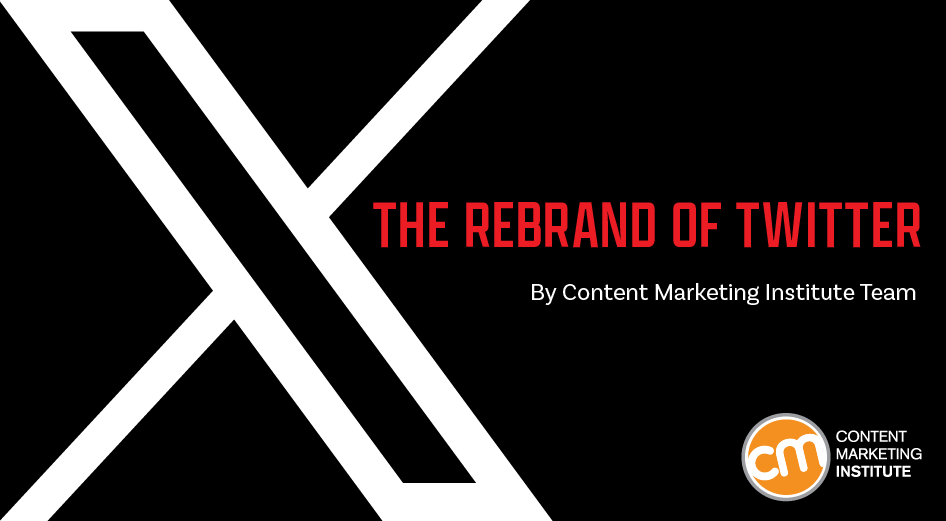X doesn’t mark the spot.
Elon Musk rolled out the rebrand of Twitter into X. The logo changed in the corner of the website. Then, the website X.com was redirected to Twitter.com.
The X logo is replacing the bird on the app icons. This week, the tagline that’s been around forever went from “Let’s talk” to “Blaze your glory.”
CMI’s chief strategy advisor Robert Rose explains what the Twitter rebrand can teach B2B marketers in this week’s CMI News video. Watch it below, or keep reading for the highlights:
The rebrand raised eyebrows and revealed the bigger, hidden challenges of introducing a new identity to an existing company. Whether purposely or just carelessly done, the rebrand of Twitter or rather X shows the potential problems that go well beyond bad design.
Twitter’s new @X identity shows the potential rebranding problems that go well beyond bad design via @Robert_Rose @CMIContent. Click To TweetA week after the X launch, the media still refers to X by its old name, as it does in this story about the X logo atop Twitter’s headquarters being removed after neighborhood complaints. And it happens in this week’s article about the battle between Threads and Twitter (aka X) is an interesting one.
And no one could be bothered to tell or can’t be bothered to inform the company’s support team (if it still exists) because a visit to X’s help section still uses the Twitter name and blue bird alongside instructions on how to tweet, retweet, and even direct your tweets to circles.
Given the content on @X’s help page, the support team didn’t get the message about the rebrand via @Robert_Rose @CMIContent. Click To TweetTwitter’s rebrand tells a story
Change is hard. Getting all the moving parts of content, interfaces, and packaging changed is huge. Consumers usually resist it. As Robert says, “A rebrand is really about starting from scratch. It is probably the most difficult project any marketing team will ever do.”
Almost all rebrands with legacy companies happen because of some crisis – an acquisition in which two companies rebrand into the stronger one, a disaster from which the brand needs to distance itself, or a product split that requires a new look and feel.
“You could argue this X rebrand came from Elon’s acquisition. But he didn’t choose a stronger brand identity; he went with an undecided or weaker brand,” Robert says.
Changing the name now reinforces the self-made disaster of the publicly criticized platform.
Changing Twitter’s name now reinforces the self-made disaster of the publicly criticized platform via @Robert_Rose @CMIContent. Click To Tweet“They could have made a thing out of rebranding the company when they had a new set of products, such as banking, audio, video, messaging, and even goods and services, that they’ve promised. Now, they’ve lost all that opportunity,” Robert says.
What does the X strategy mean?
But does any of this matter?
Maybe, just maybe, Elon and the team at X purposely created this friction around the rebrand, so it becomes a story. Is this an ingenious way of getting people to talk or get publicity for a relatively meaningless name change?
Robert says given the context of everything else happening to and within X, it’s just a case of someone who does what he wants no matter what happens. He’s blazing his glory.
What do you think? Let us know in the comments.
HANDPICKED RELATED CONTENT:
Cover image by Joseph Kalinowski/Content Marketing Institute

